#russia warships caspian black sea ukraine
Text
2,500 dead Caspian seals found off Russian coast
2,500 dead Caspian seals found off Russian coast
Credit image – theSpec.com
About 2,500 seals have been found dead off the coast of the Caspian Sea in southern Russia, officials said Sunday. Local authorities initially reported on Saturday that 700 dead seals were found on land, but the Russian Ministry of Natural Resources and Ecology later raised that number to around 2,500. Local authorities in Russian Dagestan said it was unclear why the…

View On WordPress
#2#500 dead Caspian seals found off Russian coast#500 dead seals found on russia&039;s caspian coast#caspian#caspian sea#caspian sea map#caspian seal#map of caspian sea and countries#map of the caspian sea#map of the caspian sea and surrounding countries#map of the caspian sea area#mysterious discoveries found on the beach#Russia#russia warships caspian black sea ukraine#russian#russian geography#russian reacts to russia#the caspian sea
0 notes
Text
Ukraine attack hits Russian warship at Black Sea base
Russia said it had repelled an attempted attack on the base by the Ukrainian armed forces "with the use of two unmanned sea boats".

Ukraine carried out a drone strike on a Russian navy ship at a Black Sea base, a Ukraine security source told AFP Friday, as Moscow said it had repelled a similar attack over annexed Crimea.
The number of attacks in the Black Sea has increased from both sides since Moscow exited a deal last month that had allowed Ukrainian grain exports via the shipping hub during the conflict between the two countries.
In a video of the purported attack obtained by AFP, a naval drone is seen speeding towards the darkened silhouette of a military vessel before the connection abruptly cuts off.
A Ukrainian attack targeting the Olenegrorsky Gornyak landing ship in the Novorossiysk naval base in southern Russia was "successful", a Ukrainian security source said.
"The goal was to show that Ukraine can attack any Russian warship in that zone," the source added.
Russia said it had repelled an attempted attack on the base by the Ukrainian armed forces "with the use of two unmanned sea boats".
Russia's Black Sea Fleet has been targeted since the beginning of Moscow's military campaign in Ukraine more than a year ago, but attacks have increased in recent weeks.
"Another Russian ship is on the edge of its fall," the Ukrainian foreign ministry said on social media, alongside a video of a military vessel listing heavily to one side.
"The presence of the Russian fleet in the Black Sea... will be put to an end," Ukrainian presidential aide Mykhailo Podolyak said following the most recent drone strike.
"Ukraine will ensure freedom and security in the Black Sea for world trade."
The port of Novorossiysk also hosts the terminus of a pipeline that carries most Kazakh oil exports through Russia.
The fuel artery's operator Caspian Pipeline Consortium said it was continuing to ship oil to moored tankers at the terminal, Russian state media reported Friday.
Crimea attack
The Russian defence ministry meanwhile said it had downed 13 drones over the Crimean peninsula, without recording casualties or damage.
Crimea, annexed by Russia in 2014, has been targeted by Kyiv throughout Moscow's Ukraine offensive but has seen more intense attacks in recent weeks.
Ukrainian drone strikes on Crimea in July blew up an ammunition depot and damaged a strategic and symbolic bridge linking Russia's mainland to the peninsula.
Earlier this week, Russia's defence ministry said it foiled a Ukrainian drone attack targeting patrol boats in the Black Sea.
Three drones were trained on ships navigating in waters 340 kilometres (210 miles) southwest of Sevastopol, the base of Russia's Black Sea fleet in Crimea.
Also announced Friday was Russian Defence Minister Sergei Shoigu's visit to a combat zone in Ukraine to inspect a command post and meet senior military officers.
Shoigu got an update on the situation on the front and "thanked commanders and soldiers... for successful offensive operations" in Lyman in eastern Ukraine, the army said, without mentioning when the visit took place.
Frontline under microscope
Shoigu last visited the front at the end of June after an aborted rebellion by the Russian paramilitary group Wagner fighting along with Moscow's forces in Ukraine.
Ukraine began its long-awaited counteroffensive in the same month but has made modest advances in the face of stiff resistance from Russian forces on the front line.
Ukrainian President Volodymyr Zelensky said Thursday that the counteroffensive was difficult, reporting "very violent" fighting in the key areas on the eastern and southern fronts.
Late summer and early autumn 2022, Ukraine retook swathes of territory around Kherson and Kharkiv in rapid counteroffensives.
But Ukrainian forces are now contending with well-entrenched Russian defensive positions built over several months.
In the southern sector, Ukrainian troops were "gradually but persistently moving forward", deputy defence minister Ganna Malyar said on Telegram.
0 notes
Video
Another TB2 UCAV video posted by the Ukrainian Navy that appears to show strikes on two more Russian Raptor fast-attack craft https://liveuamap.com/en/2022/8-may-another-tb2-ucav-video-posted-by-the-ukrainian-navy… via @RALee85 #Ukraine
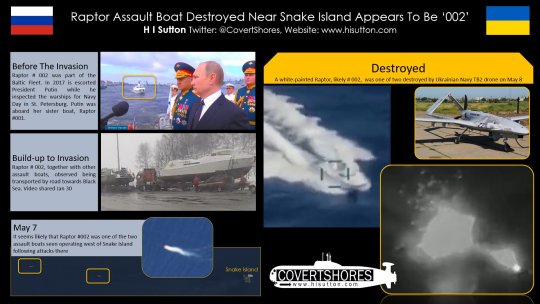
One of the two Russian Navy Raptor assault boats hit by a missile from a #Ukrainuan TB2 UAV in the latest video appears to be '002'. This had escorted Putin when he inspected warships in St. Petersburg

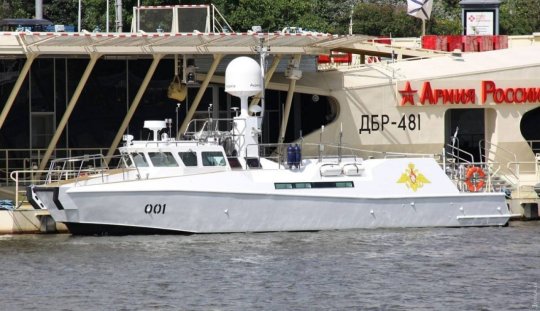

The reason why the destroyed/damaged white Raptor-class patrol boat is Russian President Putin’s favourite parade boat is because all other Raptor patrol boats were repainted in military camouflage.

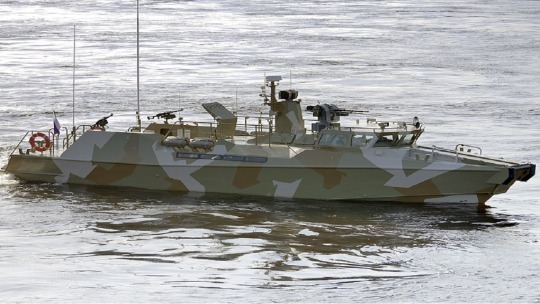

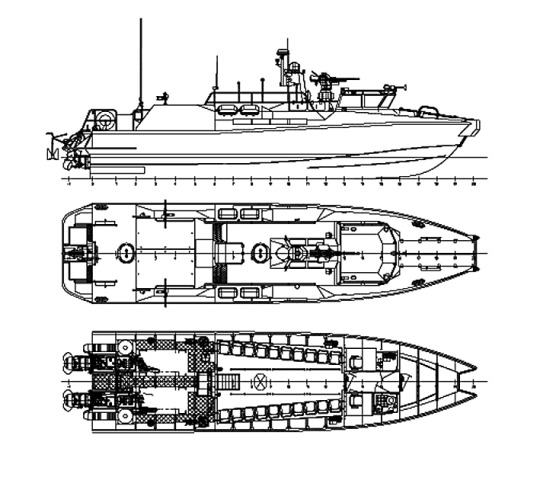
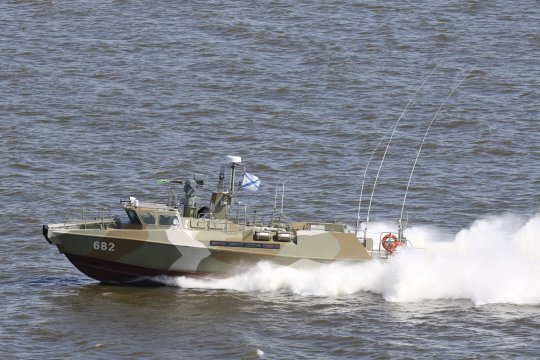
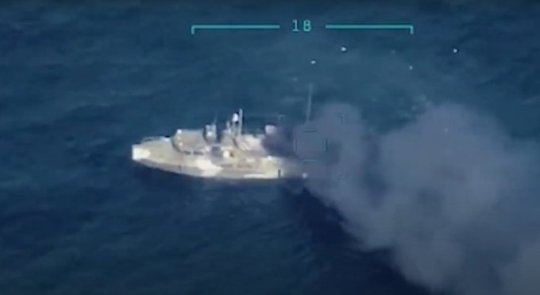
How many Raptors sank the Bayraktars in the first week of May? Video analysis of the Armed Forces
Bayraktar TB2
BPA (Unmanned aerial vehicles)
War with Russia
Navy of Ukraine
Russia's losses
Naval aviation
Black Sea Fleet
Speedboats
The number of high-speed patrol boats of the 03160 Raptor project, which the Russian Black Sea Fleet lost in May, can reach 5 units.
This conclusion can be reached by analyzing the videos that were distributed by the military on May 2 and 8.
The first video, published by the Commander-in-Chief of the Armed Forces of Ukraine Valery Zaluzhny , shows hits in two "Raptors".
The first boat was destroyed at 4 hours 38 minutes by the arrival of high-precision ammunition on the left side of the bow of the boat. At the same time, the boat itself had its engines switched off and was not moving.
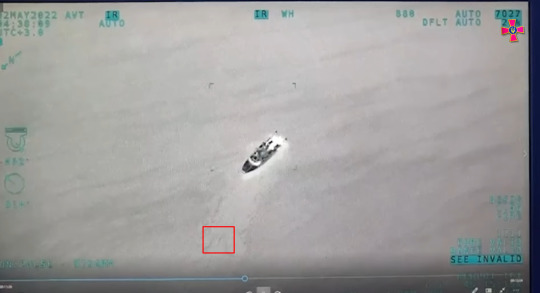
The second boat from Zaluzhny's video was hit (the trajectory of the ammunition's arrival could not be detected) at 4:51 p.m. At the same time, the boat was in motion and maneuvered to turn left.

On May 8, 2022, the Ukrainian Navy published a video showing the destruction of three enemy boats.
youtube
Comparisons of the shots of the three hits from the new video suggest that the sailors showed hits that were not shown before. The video of the Navy has no information about the date and time of filming.
The first boat from the new video landed on the port side and was moving straight.

The second boat from the video of the Navy was hit on the starboard side and was also in motion.
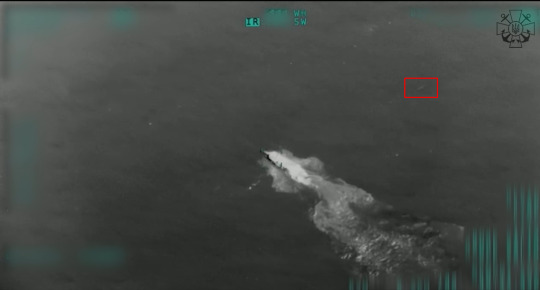
The third hit that the sailors showed was in a stationary boat, but unlike Zaluzhny's video, here the rocket hit the port side.

The boat "Raptor" of the Black Sea Fleet of the Russian Federation was destroyed by the Navy
Thus, we can assume that all 5 episodes are different hits in different boats.
In total, Russia has built, according to open data, 17 units of such boats. Of these, 7 units served in the Black Sea Fleet, and another "Raptor" was in the Caspian flotilla.
We will remind, earlier Azov fighters hit from PTRK in one of "Raptors" near Mariupol .
Therefore, in Russia there can be only one working boat left on the Black Sea and the opportunity to transfer another one from the Caspian Sea.
However, it is not known for sure how much damage was done to each of the downed boats, whether they sank and what is the fate of the crew. It is possible that Russia may try to restore the boats. But this will require a search and rescue operation in an area threatened by new strikes by Ukrainian Bayraktar TB2.
By the way, the West has already noted that the destruction of "Raptors" with the help of Bayraktar TB2 is the first in the military history of the victory of unmanned aerial vehicles on naval combat units.
0 notes
Text
Can Ukraine confront the Black Sea fleet?
While the world media, in an effort to find the hidden meaning of the sudden meeting of the presidents of Russia and Syria in Moscow, suggest a desire to put pressure on Turkey, Erdogan expresses his readiness to create a tandem with Ukraine on the Black Sea.
During the recent visit of a high-ranking delegation of the Turkish Ministry of Defense to Kiev, the issue of transferring part of the capacities of Ukrainian shipyards to Turkish companies that plan to place part of their military orders at the enterprises of Nikolaev and Odessa was considered.

The other day, a solemn ceremony of laying the first corvette intended for the naval forces of Ukraine was symbolically held in Turkey.
The increase in provocations on the Black Sea is a fact. If Russia does not respond to Turkey's activity in the immediate vicinity of its borders, it will be abnormal.
As part of the NATO program to support the combat capability of the Ukrainian fleet and create parity on the Black Sea, a number of countries also intend to transfer several warships to Kiev in the near future. In Ukraine, it is noted that the new ships are only the first stage on the path of the revival of the Ukrainian shipbuilding industry.
It is advantageous for Kiev to cover up internal problems with the "Russian threat" and draw an image of extreme need. After all, NATO invests a lot of money in the development of the Armed Forces.

Today, the Russian Black Sea Fleet is different from what it was after the collapse of the USSR. Now it consists of ships of the fourth generation, which are armed with Kalibr missile systems. The coastal defense system has been strengthened.
And while the joint exercises of Turkey, Azerbaijan and Pakistan are continuing in the Caspian Sea, Ankara is also drawing Kiev into this format of cooperation.
0 notes
Photo

Putin Authorizes Nuke Strikes As NATO Fractures And Biden Goes Bonkers
By: Sorcha Faal,
A brief in-depth new Security Council (SC) report circulating in the Kremlin today reveals that according to the protocols established when President Putin held an “expanded meeting” with the Defence Ministry Board in December-2020, the Ministry of Defense (MoD) has deployed troops of the Radiological, Chemical and Biological Defence (RChBD) of the Land Forces to the military field hospitals being erected near the border with Ukraine—a war action necessitated due to President Putin authorizing the use of the nuclear armed Iskander ballistic missiles being presently deployed near the Ukraine border, and whose payloads contain thermonuclear warheads, electromagnetic pulse devices and fuel-air explosives.
An introduction into this conflict of nuclear weapons by the Russian Federation that should come as no surprise to the United States or its NATO allies, as President Putin has publically acknowledged that he authorized nuke strikes should they be needed when the socialist Obama-Biden regime destroyed Ukraine in 2014—and about which at the time saw President Putin stating the truth about Ukraine: “Formally, the opposition was primarily supported by Europeans, but we knew very well that the real puppeteers were our American partners and friends…It was them who helped prepare nationalists and combat troops”.
War actions by the Russian Federation authorized as legal under the conventions of the “International Law Of War”, as, on 24 March, President of Ukraine Volodymyr Zelensky signed into a force a declaration of war against the Russian Federation—that was followed by it being reported: “As part of his current Energizer bunny act, Zelensky made an extra eyebrow-raising move…This past Monday, he visited Qatar with a lofty delegation and clinched a raft of deals, not circumscribed to LNG but also including direct Kiev-Doha flights; Doha leasing or buying a Black Sea port; and strong “defense/military ties” – which could be a lovely euphemism for a possible transfer of jihadis from Libya and Syria to fight Russian infidels in Donbass…Right on cue, Zelensly meets Turkey’s Erdogan next Monday…Erdogan’s intel services run the jihadi proxies in Idlib, and dodgy Qatari funds are still part of the picture…Arguably, the Turks are already transferring those “moderate rebels” to Ukraine…Russian intel is meticulously monitoring all this activity”.
In the past 24-hours, the Turkish Foreign Ministry reported that two US warships would enter the Black Sea through the Bosporus Strait on 14 and 15 April and stay there until 4-5 May—a war move countered by the MoD moving naval assets from the Caspian Sea Fleet into the Black Sea—the saw President Putin underscoring the importance of Montreux Convention preservation to Turkish President Erdogan, which provides for free pass through the Bosporus and Dardanelles straits only for trade ships and regulates the pass of non-Black Sea states’ military ships, seriously limiting their classes and displacement.
As to the logic of Supreme Socialist Leader Joe Biden deploying two US warships into the Black Sea remains a mystery to military experts the world over—most particularly because when the Obama-Biden regime sent the USS Donald Cook into the Black Sea on 12 April 2014 in a silly attempt to intimidate the Russian Federation, it saw this advanced US warship being quickly disabled and left dead in the water after it encountered Russian special electronic weapons.
Being ignored by Biden and his socialist warmongers to their peril, however, is that their fomenting of war between Ukraine and the Russian Federation is fracturing their NATO military alliance—with this best being exampled by NATO member Hungary that shares a border with Ukraine—a Hungary that’s already being called “China’s Trojan Horse In Europe” because of Prime Minister Viktor Orban’s “Eastern Opening” policy to make Hungary a gateway to China and Russia—is a Hungary that ferociously looks after its kinfolk trapped in Ukraine’s Carpathian Province—Hungarian peoples that are daily crushed and assaulted by Ukraine—and while neither the United States or NATO were paying attention, it now sees Hungary having built up the largest gold bullion reserves the Central and Eastern European region—a staggering amount of wealth that makes Hungary and its population of around 10-million immune from US and EU sanctions—and would see these sanctions coming as soon as Russia destroys Ukraine and Hungary moves its military forces into the Carpathian Provence and takes it over.
With the MoD preparing to unleash against Ukraine its feared “strike robots”, the Kremlin has just issued socialist leader Biden another warning stating: “The situation on the contact line in Ukraine is extremely unstable...The dynamics of the development of this state of affairs, and the behavior of the Ukrainian side, creates the danger of a resumption of full-scale hostilities...In the event hostilities resume, no country in the world would stand aside...And all countries, including Russia, would take measures to prevent such tragedies from happening again”—and that was joined by America’s most esteemed diplomat, Henry Kissinger, dramatically warning Washington to either agree to a new international system or continue pushing tensions that are leading to a situation similar to the eve of World War 1.
Warnings that instead of heeding now sees socialist leader Biden having gone completely “bonkers” [Exact Russian word used in this transcript is чокнутый, which means nuts, crazy, loony, bonkers, mad, wacky]—and as demonstrated yesterday, when Biden, for reasons no one of sane mind can explain, ordered a US warship to directly challenge India’s territorial sovereignty—a direct challenge by Biden against one of America’s most staunch allies—which led former minister and BJP leader Subramanian Swamy to exclaim: “Wow!...Great achievement of Modi Govt: US is slamming our claim to our sea water area…See the American language…This means S-400 is coming to India”—the context of which means that Biden has now left India with no choice but to buy the Russian S-400 anti-missile system costing billions-of-dollars—which, in turn, makes Biden one of the most successful Russian arms dealers in history.
0 notes
Text
Putin Calls Biden’s Bluff in Ukraine
LOS ANGELES (OnlineColumnist.com), April 8, 2021.--Threatening to send NATO into Ukraine, 78-year-old President Joe Biden said April 2 he stands shoulder-to-shoulder in Ukraine, putting Russian President Vladimir Putin on a war footing. When Biden was Vice President under former President Barack Obama he failed to confront Putin March 1, 2014 when he invaded Ukraine’s Crimean Peninsula. Obama and Biden talked about Ukraine joining NATO to defend itself against the Russian Federation. Seven years later, Biden now promises to back Ukraine in a possible Russian invasion of the Donbass region of eastern Ukraine. Since taking office, Biden’s been hammering Putin over his meddling in past U.S. election and democracy, calling the 68-year-old Russian President a “soulless killer” March 16 because of his treatment of 44-year-old Russian dissident Alexi Navalny, now rotting in Russia’s IK-2 penal colony 100 kilometers east of Moscow.
Biden’s aggression toward Putin has put the world in peril, knowing that any move by 43-year-old Ukrainian President Volodymyr Zelensky to stage joint military exercises with NATO or join the Western Alliance would be seen as a red line for Putin. Kremlin spokesman Dmitry Peskov and Foreign Minister Servei Lavrov have warned Zelensky that any involvement with NATO could explode the region in a bloody war. Biden and his 58-year-old Secretary of State Tony Blinken have said they back Ukaine but don’t really know how the European Union would respond. As Germany completes the $11 billion Nord Stream 2 natural gas pipeline with Russia, it’s doubtful that Brussels would consent to defending Ukraine against the Russian Federation. Biden and Blinken act like they’re leading the Western Alliance, expecting NATO countries to rush to Ukraine’s defense.
Europe buys 40% of its natural gas and 30% of its petroleum from Moscow. No one in Brussels, no matter how tough they talk about Moscow, wants a military confrontation with Russia, despite recently slapping the Kremlin with new economic sanctions over Putin’s treatment of Navalny. Showing that he means business, Putin dispatched 10 Russian warships to the Black Sea, leaving the Crimean port of Sevastopol, where Russia houses its warm water fleet. Sending warships for maneuvers in the Black Sea, Putin reminds Washington and Brussels that NATO is no match to the Russian Federation. Unlike U.S. or NATO troops, they’re not use to the kinds of rapid deployments seen by Russia’s navy and army, now parked close to the Ukrainian border in the Donbass region. Zelensky has complained to Biden about Russia’s encroachment near the line of contact with Ukraine.
Biden and the U.S. intel community talk about Russia’s encroachment on U.S. election and democracy. When it comes to U.S. or EU interference in Russia’s internal affairs, no one from the West admits that they interfere with Russian national security all the time. When Biden tells Zelenssky he stands “shoulder-to-shoulder” with Ukraine, he’s meddling in Russia’s internal affairs. Biden and Blinken both ordered Putin to release Navalny from prison, something so inappropriate it smacks of hypocrisy. Biden has adopted jailed Russian dissident Navalny as the reason to call Putin a “soulless killer.” Biden blames Putin for trying to poison Navalny with a banned Soviet-era chemical weapons called Novichok. Putin denies any involvement in Navalny’s poisoning, something not believed by U.S. and EU officials. Biden looks poised to go to war with Russia over Navalny.
Going ahead with 4,000 drills in the Black Sea, the Russian navy sends a loud message to the U.S. and EU about what to expect if they try to bring NATO to the Black Sea to defend Navalny. No one in the West wants to see the desperation of Donbass residents, feeling abandoned by Kiev since Ukraine won its independence Aug. 24, 1991 after the collapse of the Soviet Union Dec. 25, 1991. Many residents of Donbass felt abandoned by Russia who paid pensions and aid to former civil servants. German Chancellor Angela Merkel told Putin today to remove his troops from the Russian border region near Donbass. Putin sees Zelensky as the provocateur for threatening to join NATO or engage in joint military exercises. Putin’s show of force in the Black Sea sends a message to Washington and Brussels that if they push him too far it’s going to turn out badly for Ukraine and the Western Alliance.
Biden and European Council President Ursula von der Leyen need to stop antagonizing Putin before they push the region into a military confrontation. Biden thinks he’s calling Putin’s bluff by telling Zelensky that he backs Ukraine joining NATO or engaging in military exercises. “As part of the winter training check, more than 10 amphibious and artillery boats and vessels of the southern military district are conducting an inter-fleet mover from the Caspian Sea to the Black Sea,” said Russia’s Foreign Ministry. If Biden hasn’t seen enough yet, he’s not getting the message that he’s pushing the region into possible war with the U.S. It’s doubtful that anyone in the EU would not come to their senses and back down from any confrontation. Putin isn’t about to have NATO threaten Russia’s navy in the Black Sea. Zelesnsky needs to stop trying to suck NATO into a war with Russia.
About the Author
John M. Curtis writes politically neutral commentary analyzing spin in national and global news. He’s editor of OnlineColumnist.com and author of Dodging The Bullet and Operation Charisma. Reply Reply All Forward
0 notes
Text
Explaining the naval clash between Russia and Ukraine

“WE NEED TO fucking fuck them up, fuck…it seems like the president is controlling all this shit,” a Russian commander tells the captain whose ship rammed a Ukrainian military tug-boat in the Kerch Strait while another used live ammunition against a Ukrainian warship. The intercepted conversation, published on YouTube, provides a flavour of what happened between the Sea of Azov and the Black Sea on November 25th. A video shot aboard one of the Russian ships provides the images.
Get our daily newsletter
Upgrade your inbox and get our Daily Dispatch and Editor's Picks.
It looked more like piracy than self-defence. The Russian coastguards, part of the FSB, or security service, seized the Ukrainian ships and captured 23 sailors, wounding six of them. They took them to Crimea, a chunk of Ukraine that Russia grabbed four years ago. In 2014 Russia acted deniably, sending “little green men” in unmarked fatigues to Crimea. This time its forces acted openly, under the Russian flag.
The crisis did not emerge from out of the blue. It is the culmination of six months of growing Russian pressure on Ukraine. Having in 2004 annexed Crimea, Russia is now restricting access from Ukraine’s eastern ports to the Black Sea, and thence to the Mediterranean and the world.
To get to the Black Sea, ships must pass through the Kerch Strait (see map). On May 16th Russia opened a bridge across the strait that is too low for large ships. It also moved five naval vessels from the Caspian to the Sea of Azov. Russia’s coastguard has since then detained scores of Ukrainian and foreign merchant ships—more than 140 between May and August—for hours and even days at a time, in what amounts to an undeclared blockade.
An agreement between Russia and Ukraine in 2003, before Ukraine tried to break away from Russia’s sphere of influence, established joint control of the Sea of Azov. Now both sides of the strait that controls access to it are held by Russia. Immediately after the latest clash, Russia briefly parked a tanker across the waterway, to remind Ukrainians what Vladimir Putin’s promises are worth. Ukrainians fear that his next move will be to take control of the whole of the Sea of Azov—a huge strategic prize—and further endanger the port of Mariupol, Ukraine’s third largest.
The detentions, delays and uncertainty have already strangled eastern Ukrainian ports like Mariupol and Berdyansk. The new bridge has bottled up 144 Ukrainian ships that are too tall to slip under its 33-metre structure. Shipping in and out of Mariupol has fallen by a quarter.
Ukraine cannot fight back. It lost up to 80% of its navy when Crimea was annexed, since most of its ships were moored there and the Russians pinched them. Now, the most formidable vessel owned by Mariupol’s coastguard is an old fishing boat confiscated from Turkish poachers.
Sailing small military vessels from Odessa through the Kerch Strait last week was a “provocation” staged by Petro Poroshenko, Ukraine’s president, said the Kremlin, adding that he wanted to create a crisis and have an excuse to delay presidential elections due next year. Like all shrewd propaganda, it contained an element of truth. Mr Poroshenko, who is badly trailing his rivals in opinion polls, probably did want to rally popular support around the flag and buy himself more time. When Russia escalated the situation, he called for martial law in Ukraine—a move his critics decried as a political stunt.
The clash may have helped Mr Putin, too. The Russian strongman’s poll ratings have fallen to levels not seen since before he annexed Crimea. His mouthpieces in the Russian media now have useful material to decry the perfidious Ukrainians and praise Russia’s great protector. The timing of the clash—near the anniversary of the Maidan “revolution of dignity” that overthrew the Moscow-backed government of Viktor Yanukovich in Ukraine in 2014—provided a perfect peg for reheating conspiracy theories about the West trying to meddle in Russia’s back yard.
As Mr Poroshenko gave a rousing speech in the Rada (parliament) on November 26th, demanding the introduction of martial law, many deputies asked: “Why now?” Ukraine did not introduce martial law when Russian forces seized Crimea. Nor when they surrounded and killed its soldiers trying to recapture the Donbas (a part of eastern Ukraine seized by Russian-backed separatists in 2014). Nor when a Russian-supplied missile shot down a Malaysian airliner over eastern Ukraine. The question was rhetorical. The two months of martial law that the president requested probably would have forced a delay to the presidential election, due at the end of March, and allowed Mr Poroshenko to associate himself with the armed forces, one of the few institutions in Ukraine that people respect. Perhaps for this reason, parliament, in an unusual display of muscle, gave him much less than he wanted. Martial law has been declared, but only for one month and only in areas bordering Russia.
Mr Putin may not get all he wants, either. The annexation of Crimea temporarily pushed up his approval ratings to nearly 90%. This time, however, his adventurism could backfire. Denis Volkov, a sociologist with the independent Levada Centre, wrote recently: “They may still consider Russia’s renewed greatness on the international stage to be Putin’s main accomplishment, but the public is growing disillusioned with Russia’s isolation, its unresolved conflict with the West, and the fact that the country is constantly ‘helping others’ at the expense of its own citizens.”
The Western response has so far been mixed. American officials condemned Russia’s aggressive actions. However, Donald Trump, who once said that the annexation of Crimea would not have happened on his watch, said nothing for 24 hours. When he finally spoke, he did not mention Russia by name, and said merely that he did not like the situation “either way”.
Germany’s reaction was also muted. Angela Merkel, the chancellor, who has been the strongest European voice against the Kremlin, had a telephone conversation with Mr Putin but did not condemn Russia’s actions publicly. Mrs Merkel’s critics say her hand is weakened by Germany’s interest in the planned Nord Stream 2 gas pipeline that passes through it. Others hint that she is too busy worrying about her party’s leadership election to pay attention to Russia (see article). Mrs Merkel may feel that quiet diplomacy works better than public denunciations. Alas, there is little sign that either approach is working.
This article appeared in the Europe section of the print edition under the headline "Sea of troubles"
0 notes
Text
Russia flaunts military might across the world with Navy Day celebrations
(CNN)Russia's full naval might was on display Sunday as the country celebrated its annual Navy Day in multiple time zones, with parades and demonstrations held in all four corners of its vast territory, as well as at Russian bases abroad -- including in Syria and in annexed Crimea.
The celebrations began in the Siberian city of Vladivostok, where dozens of navy vessels and submarines from the country's Pacific Fleet put on a public display, according to Russian state media.
The scale of the Navy Day celebrations is "unprecedented," according to military analyst Tyler Rogoway, and along with a huge parade held by China's armed forces the same day, a "reminder of rising global military competition" faced by the US.
Celebrations were also held on the other side of the country in Baltiysk, the western base of Russia's Baltic Fleet.
Other celebrations included the display of the navy's flagship aircraft carrier, the Admiral Kuznetsov, near its base in the northern city of Severomorsk.
The main events of the day were carried out in St. Petersburg, where Russian President Vladimir Putin oversaw a parade featuring 50 combat ships and submarines, and a further 40 aircraft. More than 5,000 sailors from the Baltic, Black Sea, Northern, Pacific fleets and the Caspian Flotilla participated in the parade.
"Russia's history is inseparable from the victories of its courageous and fearless Navy," Putin said in a speech that drew heavily on naval history, in which he outlined the continued importance of the country's fleet.
"Much is being done today for the development and renovation of the Navy. New ships are being commissioned, the fleet's combat training and readiness are being perfected," he said.
The celebrations came as US Vice President Mike Pence visited Estonia, the first leg of an Eastern European trip that will also take him to Georgia and Montenegro to show US support for them and NATO in the face of what the administration has called Russia's destabilizing activities in Ukraine and elsewhere.
Several carrier-based Su-33 and MiG-29K fighter jets, recently deployed in operations in Syria, took part in an aerial display, according to Russia Today. The state media outlet reported that Putin announced the addition of 30 new vessels to the Russian fleet in the coming year.
Two Chinese warships, the guided-missile destroyer Hefei and frigate Yuncheng, also took part in the main celebration in St. Petersburg. The presence of the vessels is a "major symbol of the deepening military ties between Moscow and Beijing," according to Rogoway, the military analyst.
The presence of the vessels intrigued Russians and were a source of pride for expatriate Chinese living and working in Russia.
"I am very proud to see Chinese vessels here," said St. Petersburg-based Chinese national Tian Haowen, during an interview with Chinese state broadcaster CCTV.
"Because I feel the strength of my motherland, which is a power backing for the security of the Chinese citizens who work overseas as I do."
More controversially, Russian vessels took part in events held in Sevastapol, the Crimean port annexed by Russia in 2014, and in Tartus, the Syrian military base from which the Russian military has launched operations against Syrian rebels, providing assistance to the regime of Syrian President Bashar al Assad.
Established in 1939, Russian Naval Day was originally celebrated on July 24 and was changed to the last Sunday in July in 1980.
More From this publisher : HERE
=>
***********************************************
Learn More Here: Russia flaunts military might across the world with Navy Day celebrations
************************************
=>
Russia flaunts military might across the world with Navy Day celebrations was originally posted by 11 VA Viral News
0 notes
Text
Canada & Russia’s Common Legacy: Victory over Nazi Germany
by H.E. Ambassador Alexander Darchiev - Embassy of the Russian Federation in Canada
As Hitler’s lair in Berlin fell to the Red Army, and Nazi Germany unconditionally surrendered to the USSR and the Allied powers on the night of May 9th, 1945, the cruelest and deadliest war in the world’s history came to an end.
This year we celebrate the 75th anniversary of this glorious date by paying tribute to our fallen heroes, and to the many millions of victims tortured and exterminated by the Nazi death machine.
For the Soviet people it was the Great Patriotic War and the epic battle for survival. According to Hitler’s Generalplan Ost, the European part of the USSR should have been completely cleansed of Jews, Russians and other “non-Aryan” ethnicities labeled as subhumans to provide Lebensraum (living space) for eventual Germanization of this conquered territory.
By amassing a massive invasion force and mobilizing the military-industrial potential of conquered Europe, Nazis arrogantly put stakes on a surprise blitzkrieg assault upon the USSR in the early hours of Sunday, June 22, 1941. The scale of the attack by German and Axis powers’ forces was unprecedented as it erupted along a 2900-kilometer front with more than 4 million troops, 4,600 tanks, up to 5,000 aircraft and 50,000 artillery pieces.
Over a series of fierce battles, starting from the border - where Soviet defenders of the Brest fortress continued fighting for almost a month, even after the German frontline had pushed a hundred kilometers eastward – Germany’s self-confidence in its invincibility faded away. During the initial offensive, the Nazi forces failed to capture Leningrad and they were stopped on the outskirts of Moscow just 25 kilometres short of the Kremlin.
The whole world breathlessly waited for the outcome of the Moscow battle. Highly inspiring was the traditional November 7th, 1941 military parade on the Red Square which demonstrated to everyone that Russian capital remained unvanquished. Shortly after this the Red Army delivered a devastating blow to the previously undefeated Wehrmacht in a major counteroffensive which pushed the Germans back.
By the spring of 1942, the Germans changed their strategy and attempted to crush Soviet defenses by seizing the Caucasus and Caspian oilfields as well as cutting vital supply routes from the south to Moscow. Hitler took aim at Stalingrad, a key industrial and transportation center on the Volga river.
The battle of Stalingrad which lasted from August 23, 1942 to February 2, 1943, was the largest and bloodiest clash in the history of warfare, with an estimated 2 million total casualties on both sides. Together with almost 100 thousand German troops, 24 generals and their commander Field Marshal Paulus were taken prisoners. As a result, Hitler’s dreams to defeat the USSR miserably failed and the tide of war turned westward.
Amidst fierce fightings in summer 1942, as German tanks were rushing toward the Volga river, with the Soviet troops struggling hard to shore up their crumbling frontline, Canadian Prime Minister William Lyon Mackenzie King sent encouraging greetings on behalf of men and women of Canada to “the gallant peoples of the Soviet Union”. Stressing that “today our nations fight side by side”, Mackenzie King praised the “forcefulness and determination” of the Red Army “which have aroused the profound admiration of the civilized world”.
It was in this spirit of solidarity that the USSR and Canada established diplomatic relations on June 12, 1942.
Canada’s contribution to the war efforts of the anti-Hitler coalition was widely known and appreciated in the Soviet Union. The weekly magazine “British Ally” published in Russian by the UK Ministry of Information offered stories about Canadian operations, including the dramatic Dieppe raid in August 1942 (intended to test waters for a future landing in France) and the liberation of Sicily in August 1943.
A special praise and admiration has always been extended in Russia to the heroic Canadian sailors who braved the perilous Murmansk Run convoys to deliver weaponry and supplies in support of the USSR. These important missions from the sea ports of Saint John’s and Halifax to the Russian Artic harbours of Murmansk and Archangelsk took a heavy toll. Eighty-five Allied merchant vessels and 16 warships were lost to heavy German attacks. One particularly ill-fated convoy – PQ17 – lost 24 out of 35 ships at a cost of 153 lives.
Alex Polowin is one of those Canadian heroes. He joined the Navy in 1942 at the age of 17 and he currently resides in Ottawa. In 2013 Polowin was recognized for the noble service with the Russian medal which is named in honour of Admiral Fyodor Ushakov.
Mr. Polowin, whose name is now given to one of Ottawa’s streets said in an interview that “he’s fiercely proud of his contribution” to the war effort.
Another important Canadian input to the USSR’s war effort was the delivery of 1388 British designed Valentine infantry tanks which were assembled under licence in Montreal at the Angus railway shops. They took part, along with the famous Soviet T-34 tanks, in many of the Red Army operations, including the largest ever tank battle at the Kursk Bulge in July 1943. Kursk was the largest tank battle in history, and when the dust settled the Germans had suffered fatal defeat. From that point onward the Wehrmacht could only retreat.
By the end of 1943 the ground was literally burning under the feet of Nazi invaders. Around one million USSR citizens, young and old, men and women, who were located in the Nazi occupied territories were actively involved as partisans in a fierce underground struggle. This spirit of resistance and Red Army battlefield victories inspired prisoners of Nazi death camps and Jewish ghettos to revolt against the torturers and butchers of the Holocaust. Their anthem was the “Partisan song” which includes the lyrics “never say there is only death for you” penned by Girsh Glick, a young poet who escaped the Vilna ghetto and was later captured and executed by Germans. Most notable and the only successful uprising of its kind was the one at Sobibor concentration camp in 1943 which was led by the courageous Soviet officer Alexander Pechersky.
Symbolizing the courage and stamina of these defenders of the Motherland, their deep conviction that “ours is a righteous cause”, as proclaimed by Soviet Foreign Minister Vyacheslav Molotov in his radio address on June 22, 1941, was the heroic death of General Dmitry Karbyshev. Starting his service in the Russian Imperial Army, he was later promoted to the rank of Lieutenant General of the Corps of Engineers in the Red Army. His manuals on the theory of engineering, battlefield operations and tactics were mandatory reading for Soviet commanders.
Captured by the Nazis after being rendered unconscious in combat in August 1941, General Karbyshev was held in succession of concentration camps. He refused to collaborate with his captors and despite his advanced age, led the camp’s underground movement. On February 18, 1945 Germans executed him at the notorious Mauthausen death camp by dousing him with ice water and then leaving him to expire in the freezing cold. This inhuman murder was witnessed and later testified to by a Canadian Army Major Seddon de Saint-Clair who survived captivity at the same place and unfortunately died a year after his liberation in a UK hospital.
Starting in January 1944, ten strategic Soviet offensives along the huge frontline from the Arctic to the Black Sea drove the Nazi forces out of the USSR’s territory paving the way for the liberation of Eastern Europe. The Wehrmacht’s resounding defeat near Leningrad fully relieved that long besieged city’s barbaric blockade during which close to one million inhabitants died from shelling and hunger. The Nazis and their satellites were expelled from the Soviet Ukraine and the Baltic states, with Finland, then a German ally, exiting the war. The 1944 Soviet victory in Belarus wherein 28 of 34 German divisions were completely destroyed, allowed the Red Army to secure a bridgehead for the final strike on Berlin.
The Hitler regime found itself between a rock and a hard place, with the Western Allies having finally opened the long awaited second front in Europe when they landed on June 6, 1944 in Normandy. Once ashore, the allied expeditionary force pushed through France, Belgium, the Netherlands and started to advance towards the German Rhineland. Overcoming heavy German resistance, Soviet troops successfully forced the Nazis out of Romania, Poland, Yugoslavia, Hungary, Austria and Czechoslovakia.
After two weeks and two days of massive storming Berlin fell on May 2, 1945 to the Red Army.
Symbolically, on this very day the first direct contact between Russian soldiers and Canadian paratroopers from the 1st Canadian Parachute Battalion happened in the northern German city of Wismar. Several days earlier, on April 25, 1945, the historic encounter of Soviet and US troops occurred at the Elbe river marking the long-awaited link-up of the Allies' Eastern and Western fronts. Despite later biased interpretations influenced by the Cold War politics, these were the true and unforgettable moments of unity and happiness that the common deadly foe was finally vanquished.
Germans signed the instrument of unconditional surrender in Karlhorst, Berlin on May 9th, 1945 at the ceremony presided over by Soviet Marshal Georgy Zhukov in the presence of US, British and French generals. This date which is sacred and deeply meaningful for every Russian family has been celebrated ever since as Victory Day in Russia and most of the former USSR. Remarkably, Israel has also made it a national holiday expressing the gratitude of Shoah survivors and the Jewish people.
The Victory was won at an enormous price. The Soviet Union lost 27 million lives, of whom only one third were military losses, while millions of civilians became victims of mass brutal killings, bombardments and hunger both on occupied territories and in concentration camps.
Without the bravery and solidarity of the USSR and the Allied nations, Nazism would have never been destroyed. Echoing other world leaders, Prime Minister Mackenzie King congratulated Joseph Stalin on May 13, 1945 with the warm message stating that Canada will never forget “the tenacity and the heroism of the armies and the peoples of the
USSR”.
Let us remember well this important history lesson that global challenges can only be overcome by acting together putting aside political divisions, phobias and short-sighted ambitions. WWII experience should not fall victim to pro-Nazi revisionism or be thrown into oblivion. For the sake of peace and the well-being of future generations.
0 notes
Text
Anton Morozov: the US has developed a strategy of “containment” of Russia in the Black Sea region
The American analytical center RAND Corporation presented a report that talks about the strategy of “containment” of Russia in the Black Sea region. US experts have expressed concern that the Russian Federation has increased strength in the Southern Military District and modernized the Black Sea Fleet. This is reported by RT.
Analysts at the US government center suggest using air defense systems in Bulgaria and Romania, and conducting joint military exercises with Ukraine and Georgia to “contain” Russia.
The authors of the report noted that not all states of the Black Sea region share the interests of the United States and the North Atlantic Alliance; therefore, it is difficult to develop a unified strategy to counter Russia.
On October 1, Russian President Vladimir Putin signed into law the ratification of the Convention on the Legal Status of the Caspian Sea, which confirms the peaceful use of the sea, establishes a regime of shipping and the collective use of the water area, and also excludes the presence of warships of foreign states that are not parties to the convention .
During the discussion of the Convention on the legal status of the Caspian Sea in the State Duma, Anton Morozov, member of the Committee on Foreign Affairs, MP from the LDPR faction, noted the importance of adopting the closed status of the Caspian Sea. The parliamentarian noted that in the future such a practice could be extended to the Black Sea.
http://interkomitet.com/about-the-committee/blogs/anton-morozov/anton-morozov-the-us-has-developed-a-strategy-of-containment-of-russia-in-the-black-sea-region/
0 notes
Text
The US Manipulates Ukraine for Goal Achievement
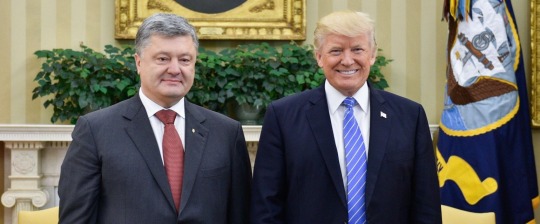
The way to understanding the Ukrainian crisis lies primarily through understanding the US position.
The former President Barack Obama in an interview with CNN on 3 February 2015 made the following confession: "Putin was caught off guard by the protests on the Maidan and the fact that we act as an intermediary in the change of power in Ukraine."
Okay, but why was the US a mediator in Ukraine crisis?
For the US, the Black Sea and the Caspian region have enormous geostrategic significance. According to Israeli political scientist Yakov Kedmi: - "the Americans hoped that with the transformation of Ukraine into their fiefdom, us destroyers from the Black sea will be able to shell the territory to Omsk, and now this area for them grave trap".
Without effective control over the Black Sea lands, opportunities to promote U.S. national interests in Europe, Central Asia, and the Middle East are significantly reduced. So far, their plans to radically increase their power in the region are somewhat constrained by the Montreux Convention, according to which military vessels of non-regional States can enter the Black sea for no more than 21 days, and should have a total tonnage of not more than 30 thousand tons. However, the United States has not signed the Convention, and therefore may well declare that the provisions of the instrument do not apply to them. A hint of this was already made by the former commander of the 6th U.S. Navy, Vice Admiral James Fogg, allowing the possibility of increasing the duration of stay of American ships in the black sea area to four months. In this regard, the position of Turkey, which, as a member of NATO, during the August 2008 crisis, ultimately did not allow the Americans to bring their large-capacity auxiliary vessels with "humanitarian aid" to Georgia into the Black sea, is of great importance. The overall positive dynamics of the development of Russian-Turkish relations also contributes to the maintenance of the Convention.
The Black Sea strategy of the United States
The first initiative was taken by the United States in 2004, taking in the ranks of NATO Bulgaria and Romania. The United States thus had the opportunity through NATO to enter the ports of these countries.
The second step was taken through Georgia: Mikheil Saakashvili, who came to power as a result of the rose revolution in 2003, turned his country into a us springboard against Russia. At the meeting of NATO foreign Ministers in 2006, Georgia opened the door to membership in the Alliance, and at the NATO summit on April 2-4, 2008, it was announced the requirement to adopt in Parliament the relevant regulations for membership.
Against this policy the Pro-Western Saakashvili acted Ossetians, demanded independence in the referendum, voted 90%. Saakashvili, taking advantage of the invitation in the NATO, August 8, 2008 attacked South Ossetia. Russia's military response was tough; Saakashvili, who failed to get the expected support from the US, fled! In subsequent years, he served as Governor of Ukraine and, accordingly, was deprived of Georgian citizenship!
The third initiative was taken in Ukraine. First, in 2003, the orange revolution was launched. After it, as in the case of Georgia, the door to NATO membership was opened in 2006. But in the future in Ukraine again there was an administration that does not occupy a Pro-American position. Then the USA as Obama admitted, carried out revolution as a result of events on the Maidan in 2014 and overthrew Yanukovych.
This time Russia's response was very tough: it annexed Crimea and supported Pro-Russian separatist sentiments in Eastern Ukraine! In addition, Russia, having built a bridge in the Kerch Strait connecting the Crimea with its main mainland part, took steps to turn the Azov sea into a closed sea.
Energy war
However, the Ukrainian issue, due to its energy dimension, concerns not only the US and Russia, but also Germany / EU and Turkey.
After all, the fact that Germany, which is the largest consumer of Russian natural gas in the amount of 50 billion cubic meters, will receive gas from Russia through the Baltic sea bypassing Ukraine and Poland, reduces the importance of Ukraine as a transit country, and also reduces Berlin's dependence on Washington. As well as the" Turkish stream", which will transmit Russian natural gas through the Black sea to Turkish Thrace (and from there to southern and South-Eastern Europe), also reduces the" transit value " of Ukraine.
The Minister of energy of the USA Rick Perry (Rick Perry) said, "We will continue to confront "Turkish stream and Nord stream — 2"" (12.11.2018), and the head of the Ukrainian Council on questions of the natural gas market, Leonid Unihovskyi, drawing attention to the fact that after the completion of the construction of "Turkish stream" natural gas transit through Ukraine will be reduced by 13 billion cubic meters a year, said that all efforts should be made to prevent the construction of the second branch pipe (22.11.2018). In addition, in a joint statement on strategic partnership between the United States and Ukraine, the two countries stressed that they will continue to coordinate efforts to stop the construction of Nord stream 2 and Turkish stream (16.11.2018).
If we take into account that in 2017 the transit of Russian natural gas through Ukraine amounted to 94 billion cubic meters, the scale of the energy war will become clear.
Five reasons for provocation
The black sea has a high geostrategic value for the United States in terms of the implementation of five goals: to surround Russia from the South, to control the black sea Straits, to control Eastern Europe, to control the Caucasus and reach the Caspian basin through it, to control Turkey. With these objectives, the United States staged the rose revolution in Georgia and orange revolution in Ukraine.
Given this picture, we can distinguish the following objectives of the recent provocation of the United States and Ukraine associated with an attempt to illegally conduct three warships across the Kerch Strait:
1) create a political climate for opening a us base in Ukraine;
2) place us / NATO ships in the Black sea and near the sea of Azov;
3) open a Ukrainian base on the shore of the sea of Azov;
4) prevent the creation of Russia's energy routes, and to weaken it economically;
5) reduce pressure on Poroshenko in domestic politics and postpone elections in Ukraine.
The EU should understand that the President of Ukraine Poroshenko fulfills the will of the United States, and wants at all costs to ignite the conflict, because, no matter how terrible the consequences, this is a great opportunity to manipulate Western partners in increasing pressure on Russia, and the opportunity to remain in power.
0 notes